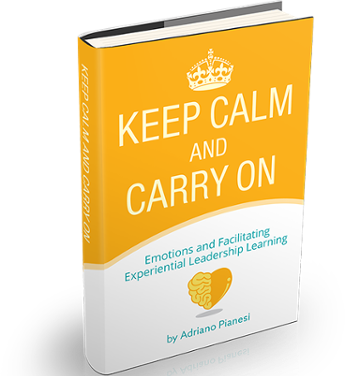Warning: Undefined array key "custom_image_width" in /misc/26/275/122/073/3/user/web/pianesi.com/wp-content/plugins/printfriendly/pf.php on line 1275
Warning: Undefined array key "custom_image_height" in /misc/26/275/122/073/3/user/web/pianesi.com/wp-content/plugins/printfriendly/pf.php on line 1276
“Feeling learning is one of the most important modes of learning as a way of being because the pace, pressure, and complexity of permanent white water can leave us distracted, anxious, and breathless…. Feeling learning probably is one of the most important factors in retention of what is learned.” – Peter Vail
Emotions as important for learning came to the fore after the publication of Goleman’s Emotional Intelligence in 1995. Since then, many insights from neuroscience have clarified the critical role that emotions play in the learning process. Step two of Jack Mezirow’s ten-step transformative learning process is “self-examination with feelings of guilt or shame.” And in Chris Argyris’s Action Science, when analyzing the discrepancy between theory-in-use and espoused theory, a critical step is exploring the reasons for the feelings evoked.
Two key ideas are worth mentioning here: Ronald Heifetz’s idea of learning “below the neck,” from the theory of Adaptive Leadership, and to Peter Vail’s idea of “feeling learning” from his book Learning as a Way of Being.
As an adaptive leadership practitioner and experiential educator, I treasure the distinction created by Ron Heifetz between learning “above the neck” – the intellectual faculties and the home of logic and facts – and “below the neck” – the emotional faculties, the home of values, intuition, and inner purpose. Heifetz’s great intuition is that the work of leaders – and that of educators – is about “managing the gradual process of easing people into an uncomfortable state of uncertainty, disorder, conflict, or chaos at a pace and level that does not overwhelm them yet takes them out of their comfort zones and mobilizes them to engage in addressing an adaptive challenge.”
The truth is that some participants walk into class ready and expecting to learn only “above the neck”. When it turns out that the work required for their next level of personal development is predominantly “below the neck”, when people realize that the work in the class will be done at a different level, they feel disappointed or discouraged. This disappointment generates anxiety, and the fear they experience can impair their ability to learn, if left unmanaged.
According to Vail, the learning required to deal with the reality of our times, “a world of permanent white water,” has to be self-directed, creative, and expressive – that is, in two words, “feeling learning.” Feeling learning is the only kind of learning that allows the level of depth required by our reality. Learning occurs “as much at the level of one’s feelings as it does at the level of ideas and skills.… But the institutional learning model tends to ignore learning meanings that involve deep feelings, failing to prepare learners for learning in permanent white water.” The unfortunate dichotomy that separates affective learning from cognitive learning results in a dangerous emphasis on facts, methods, and frameworks, but “without attitudes and feelings, the facts and methods are useless.”
People are ready for facts and methods—not for the reality of an experiential class. So people resist the learning and check out. What does it all mean for managing our team or for teaching our next class?

Adriano understands how to increase your returns on leadership. He works with professionals in world-class organizations that include Philip Morris, Microsoft, the World Bank, Johns Hopkins University, the US Marine Corps, the State Department and NASA. A skilled experiential educator with corporate leadership experience, he is the Founder & Principal Consultant of ParticipAction Consulting, Inc., a firm committed to help clients redefine change, collaboration and power in their organizations. He co-authored "Teachable Moments of Leadership" with Jill Hufnagel in 2016, on a learning methodology that gets results by going from PowerPoint to …powerful!
Adriano Pianesi | adriano@pianesi.com



Recent Comments